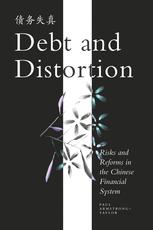

Most ebook files are in PDF format, so you can easily read them using various software such as Foxit Reader or directly on the Google Chrome browser.
Some ebook files are released by publishers in other formats such as .awz, .mobi, .epub, .fb2, etc. You may need to install specific software to read these formats on mobile/PC, such as Calibre.
Please read the tutorial at this link: https://ebookbell.com/faq
We offer FREE conversion to the popular formats you request; however, this may take some time. Therefore, right after payment, please email us, and we will try to provide the service as quickly as possible.
For some exceptional file formats or broken links (if any), please refrain from opening any disputes. Instead, email us first, and we will try to assist within a maximum of 6 hours.
EbookBell Team

0.0
0 reviewsChina’s unprecedented growth has transformed the lives of its people and impacted economies across the globe. The financial system supported this growth by providing cheap loans to boost investment and, in a virtuous cycle, rapid growth insured that these loans could be repaid. However, in recent years, this virtuous cycle has turned vicious. The financial system has continued to lend freely and cheaply as the economy has slowed, and the risk of crisis has mounted. In response, the government has initiated the most ambitious financial reforms in twenty years. Financial markets, businesses and governments are concerned about these risks and are struggling to understand what the reforms will mean for China and the rest of the world.
Debt and Distortion: Risks and Reforms in the Chinese Financial System addresses the need for an up-to-date and accessible, yet comprehensive analysis of China’s financial system and related reforms. It will take a systematic look at China’s financial system: how it worked in the past and how it will work in the future; why reforms are needed; what risks they bring; and their impact on China and the rest of the world. By analyzing the topic in terms of a few fundamental distortions, this book makes an otherwise complex topic accessible while simultaneously providing new insights. These distortions provide a simple framework for understanding the nature of the Chinese financial system and its future prospects.
Reform in China will transform the world’s second largest economy and impact everything from Peruvian copper mines to the London housing market. Business people, government officials, financiers and informed citizens would all benefit from understanding how changes in China’s financial system will shape the global economy in the coming decades.